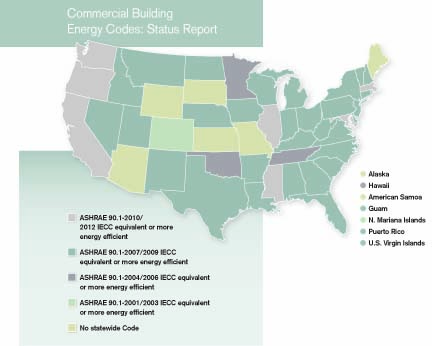The ASHRAE 90.1 Standard Process
In the late '80s, the U.S. Department of Energy (DOE) accepted ASHRAE as the standard writer for building systems that consume energy, and pushed to have its standards adopted into law by all the states. Developed in cooperation with the Illuminating Engineering Society (IES), the ASHRAE standard incorporates requirements for lighting devices that use energy. ASHRAE has been issuing energy standards since 1989 and, in 2001, began doing so every 3 years. Even as the 2010 version takes effect this year, ASHRAE is already working on the 2013 version of standard 90.1.
Through a lengthy process that involves many parties (including engineers, governmental officials, equipment manufacturers, and other groups), ASHRAE develops its rules, seeking general acceptance through wide representation on its committees. The overall goal is to keep raising the bar as energy systems and equipment continue to improve, capturing significant cost savings and emissions reductions for building owners, operators, and occupants. As many facility managers would likely attest, it's an ongoing struggle to keep up with off-the-shelf energy efficiency technologies, even as those shelves fill up with new options. Following the ASHRAE standard is a great way to specify the most efficient and (on average) cost-effective energy equipment and systems.
— Lindsay Audin |








 Click for larger PDF
Click for larger PDF





